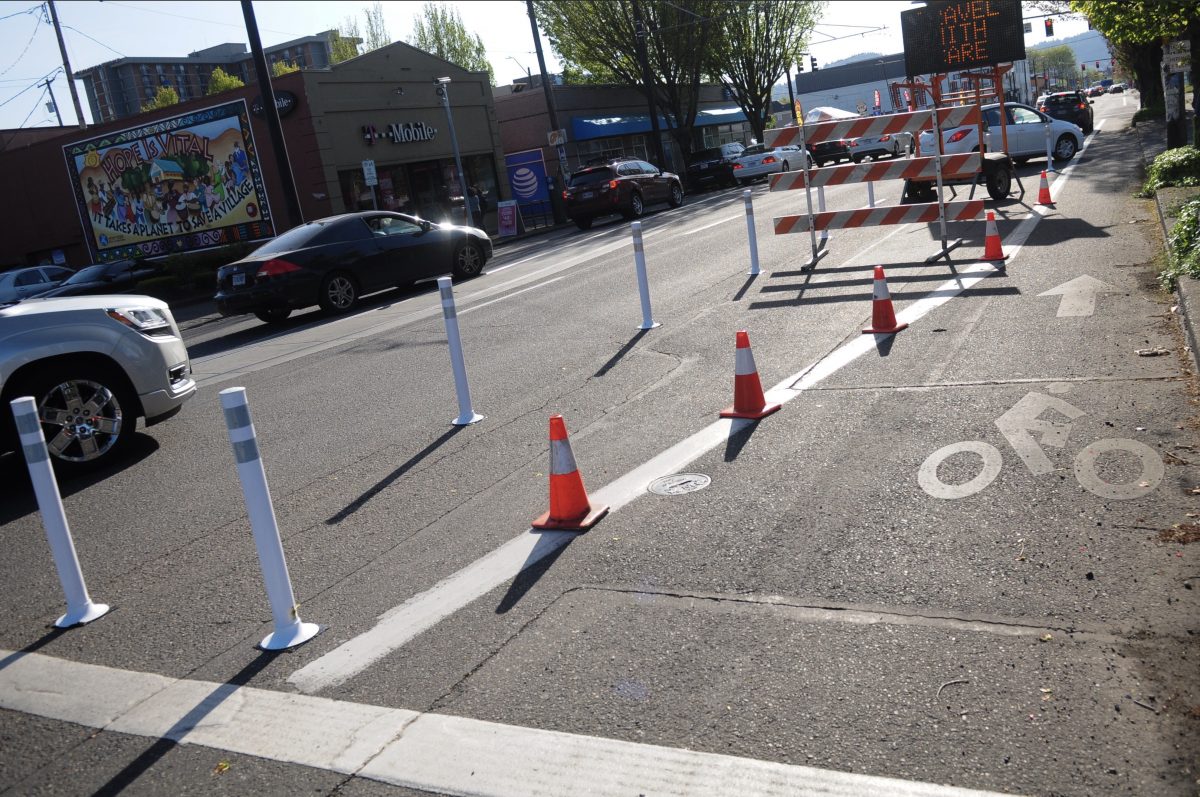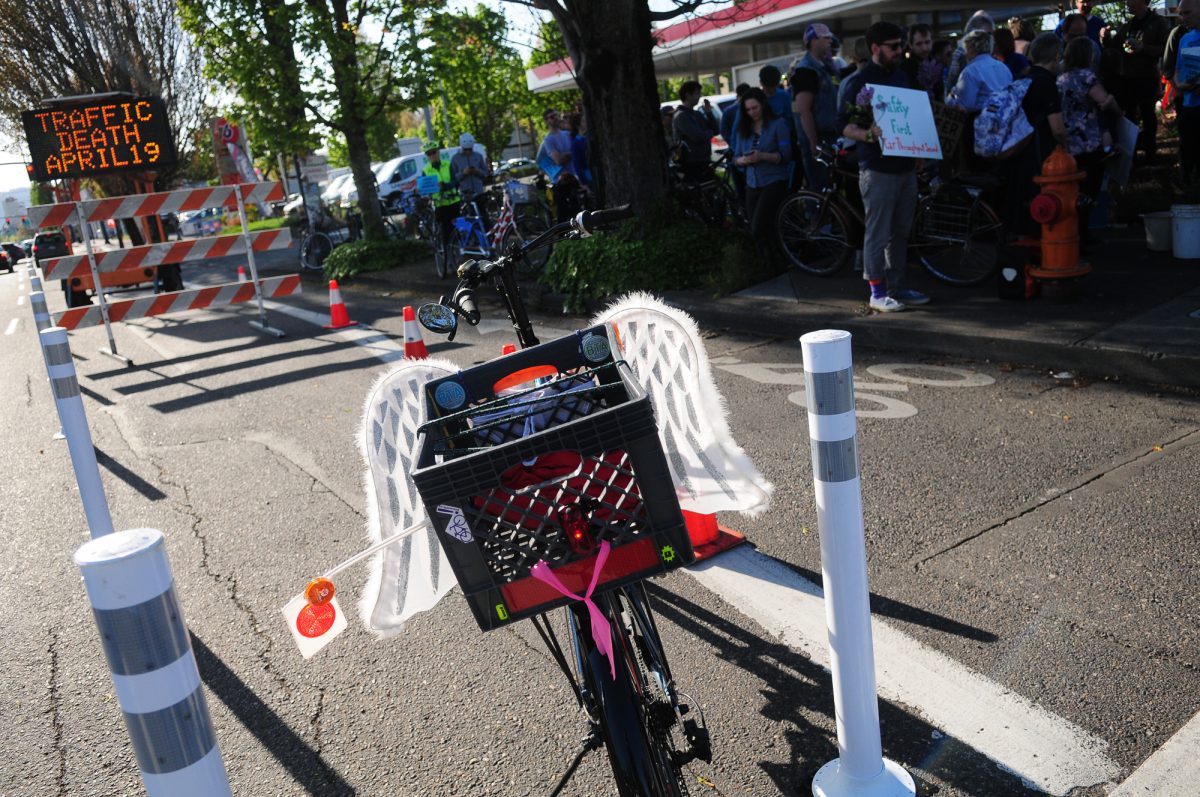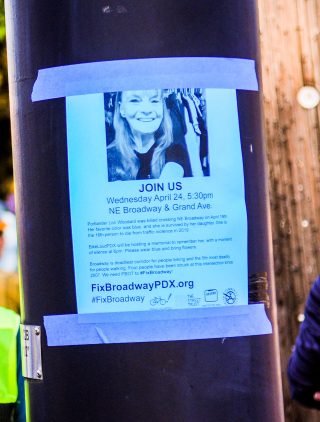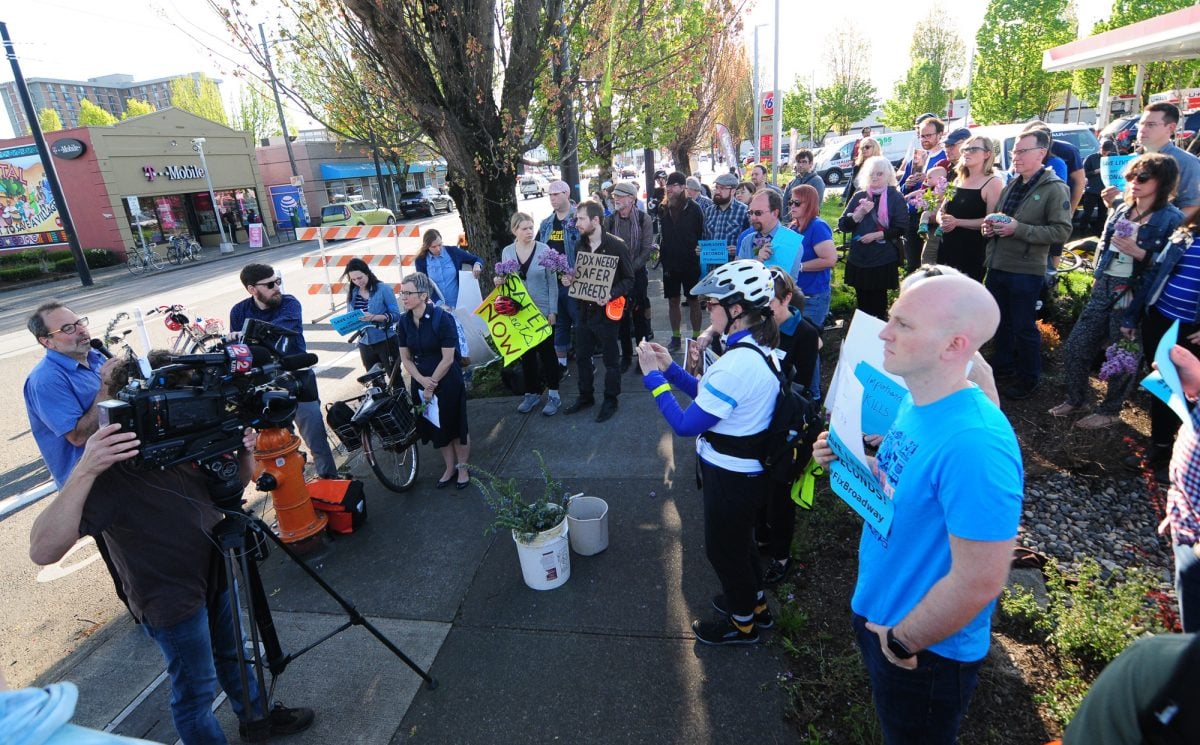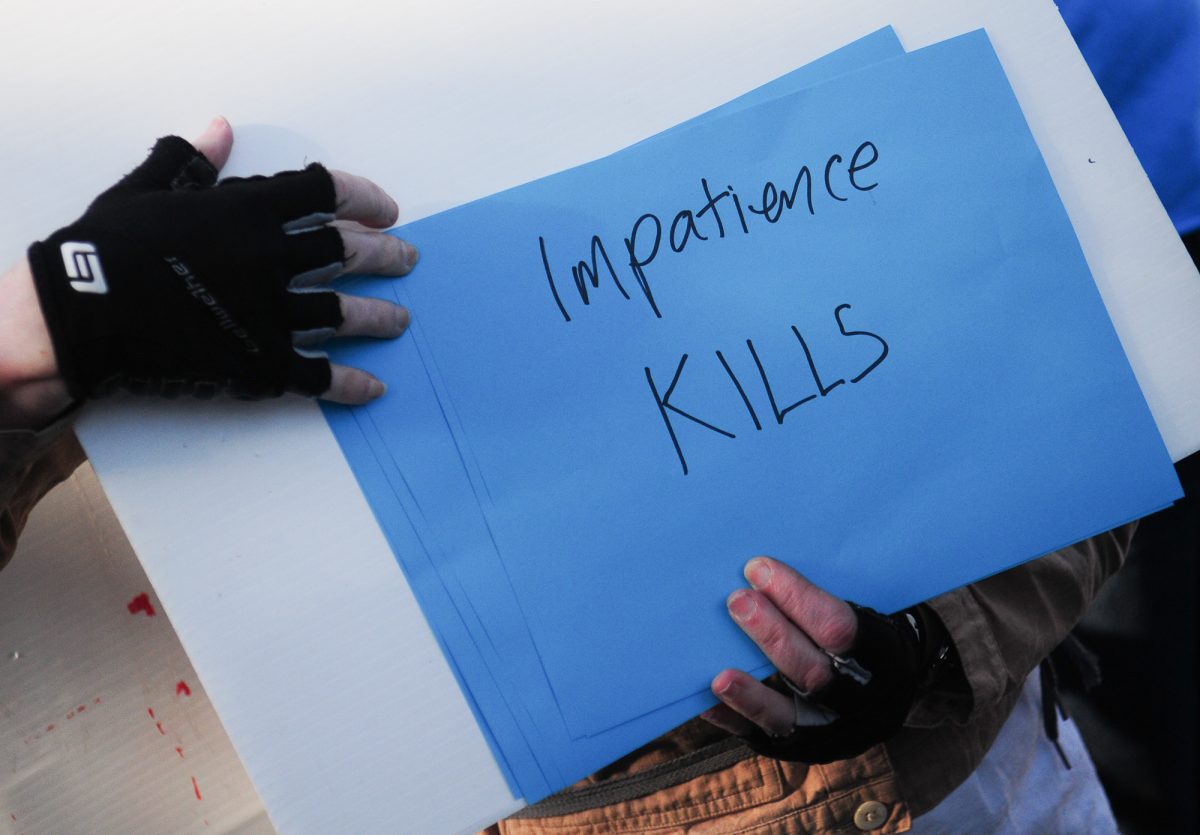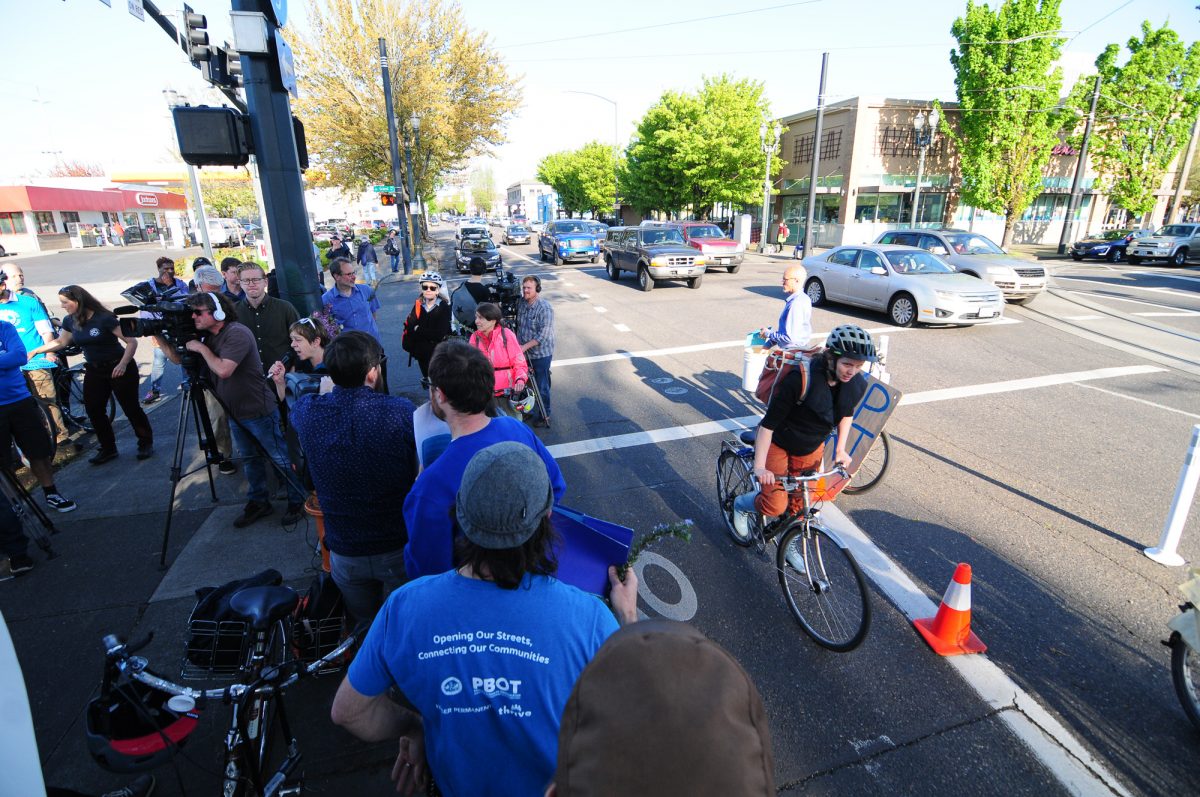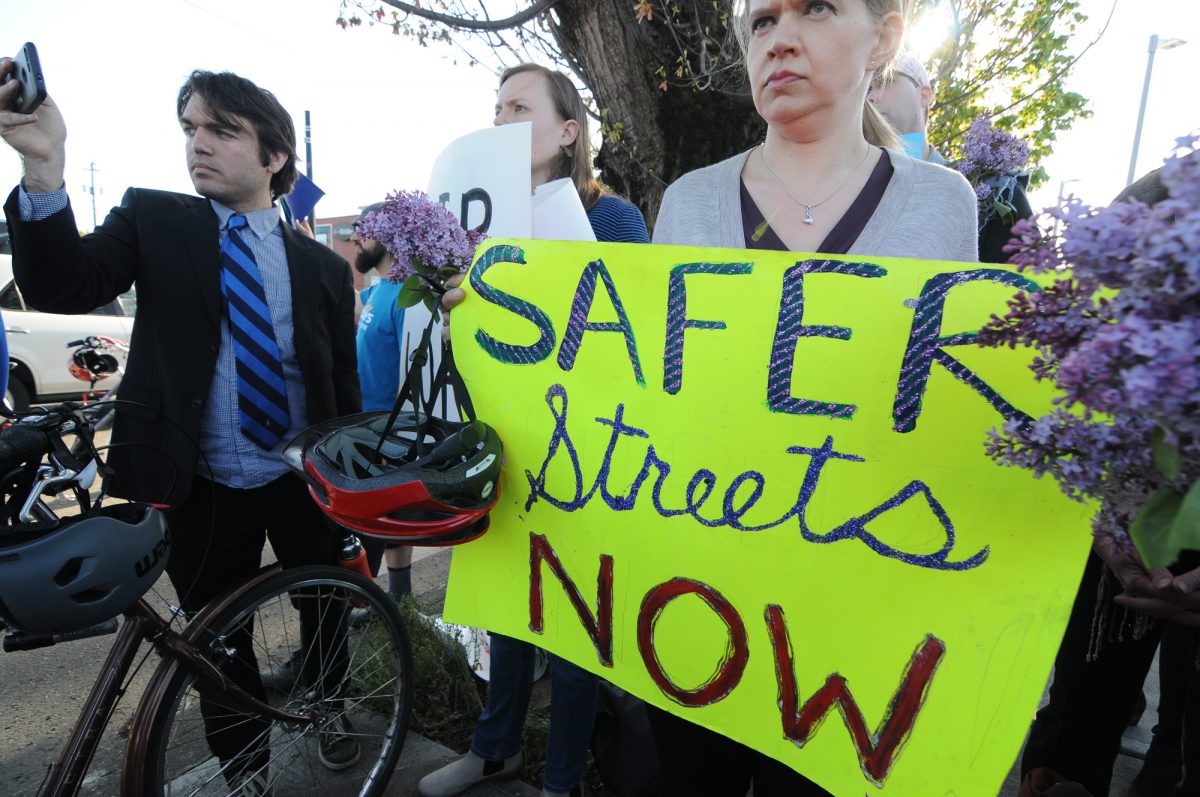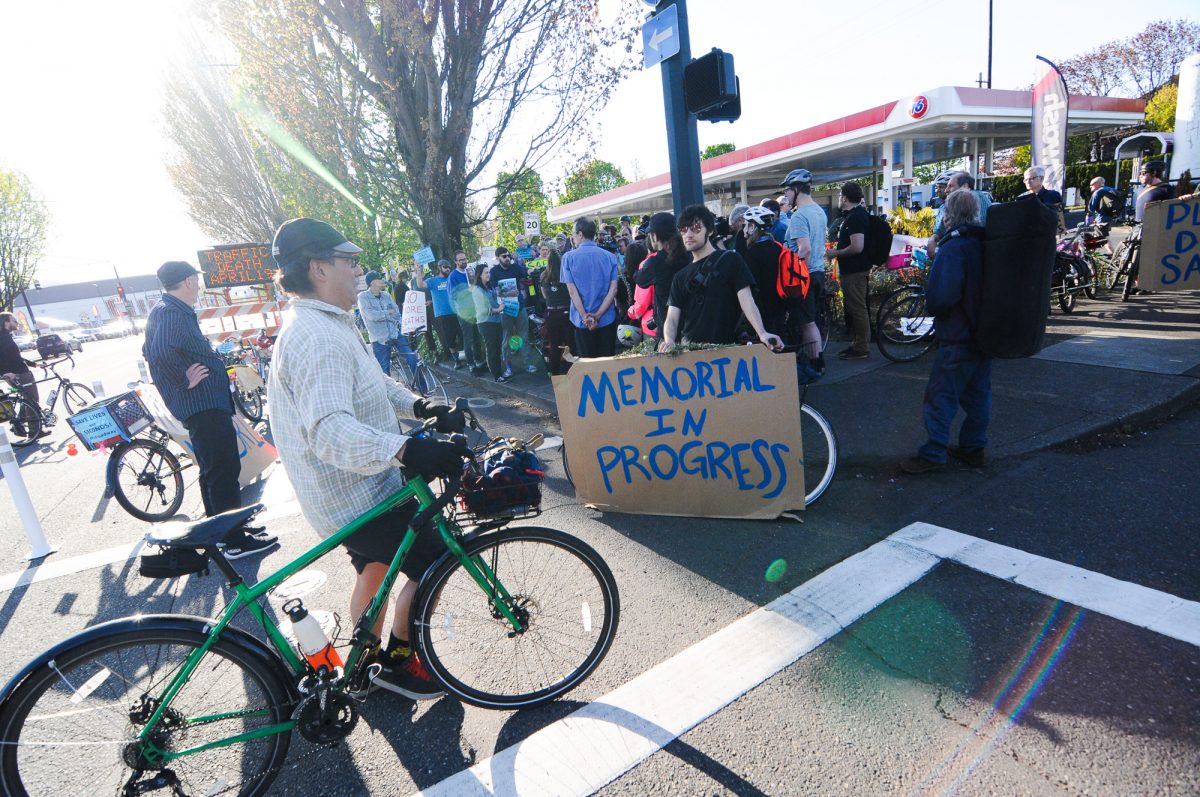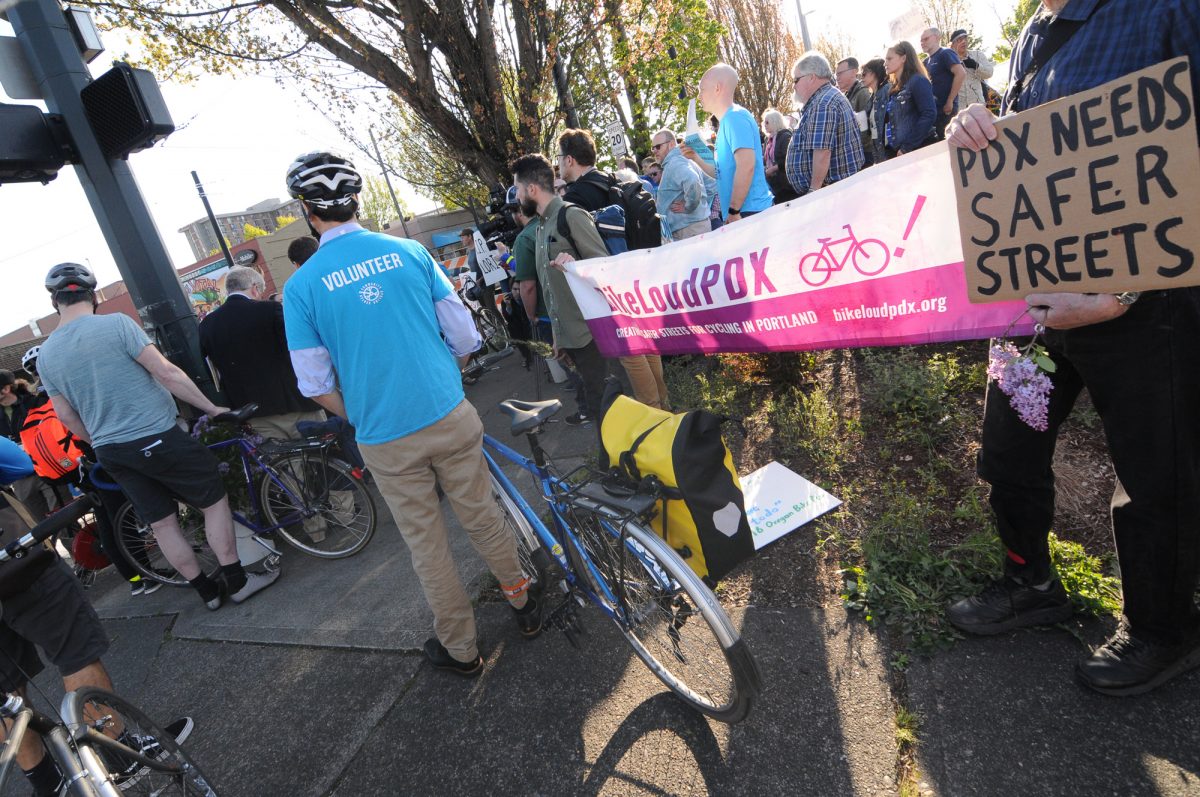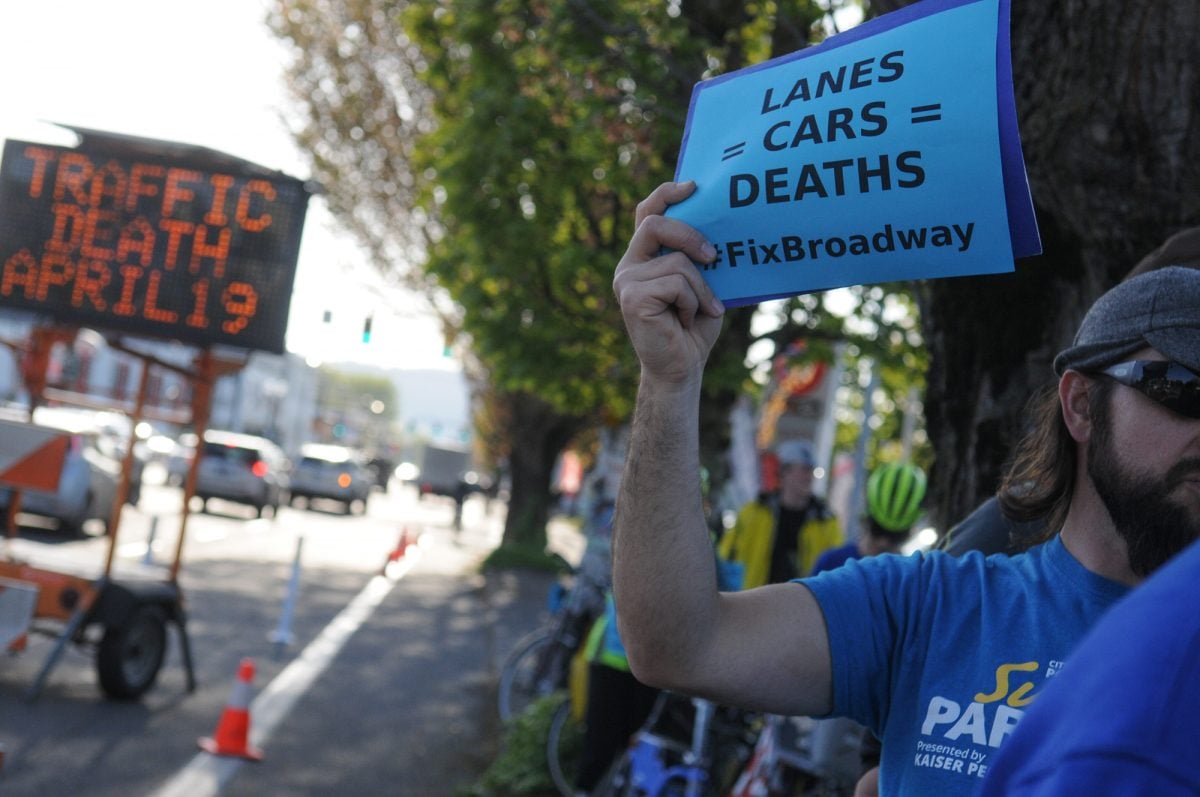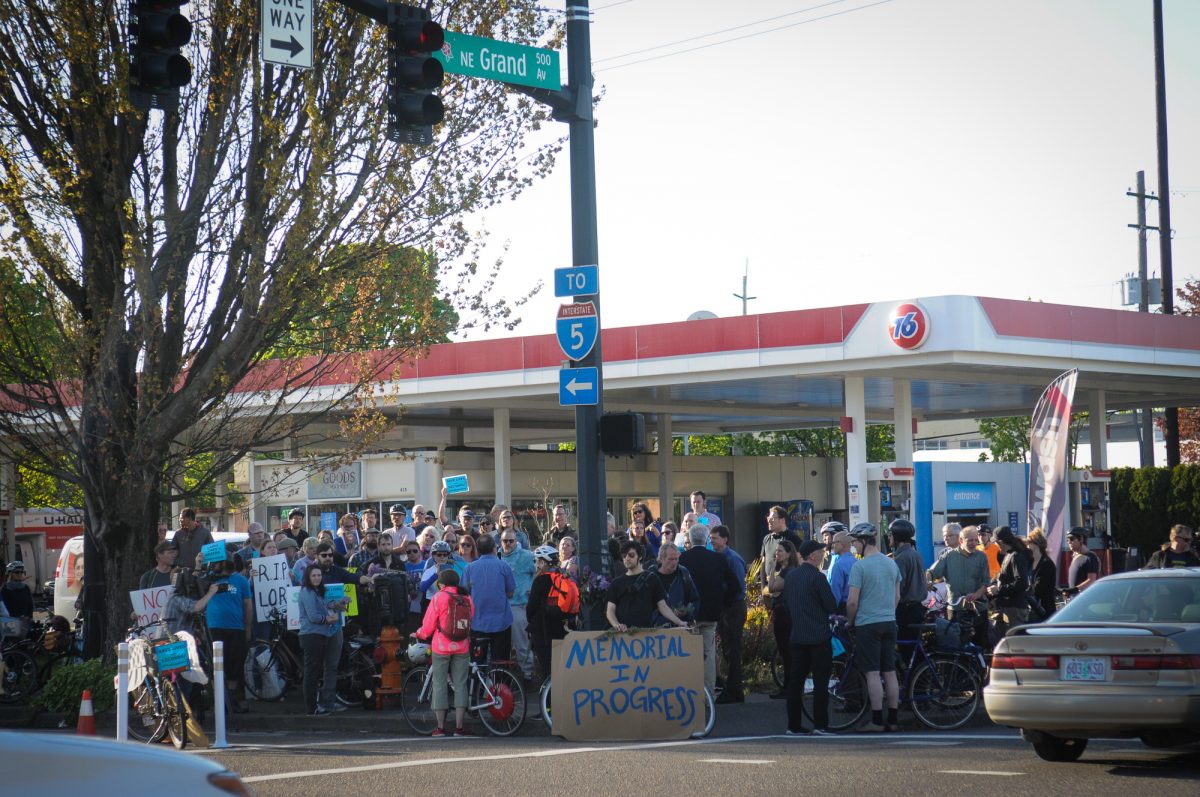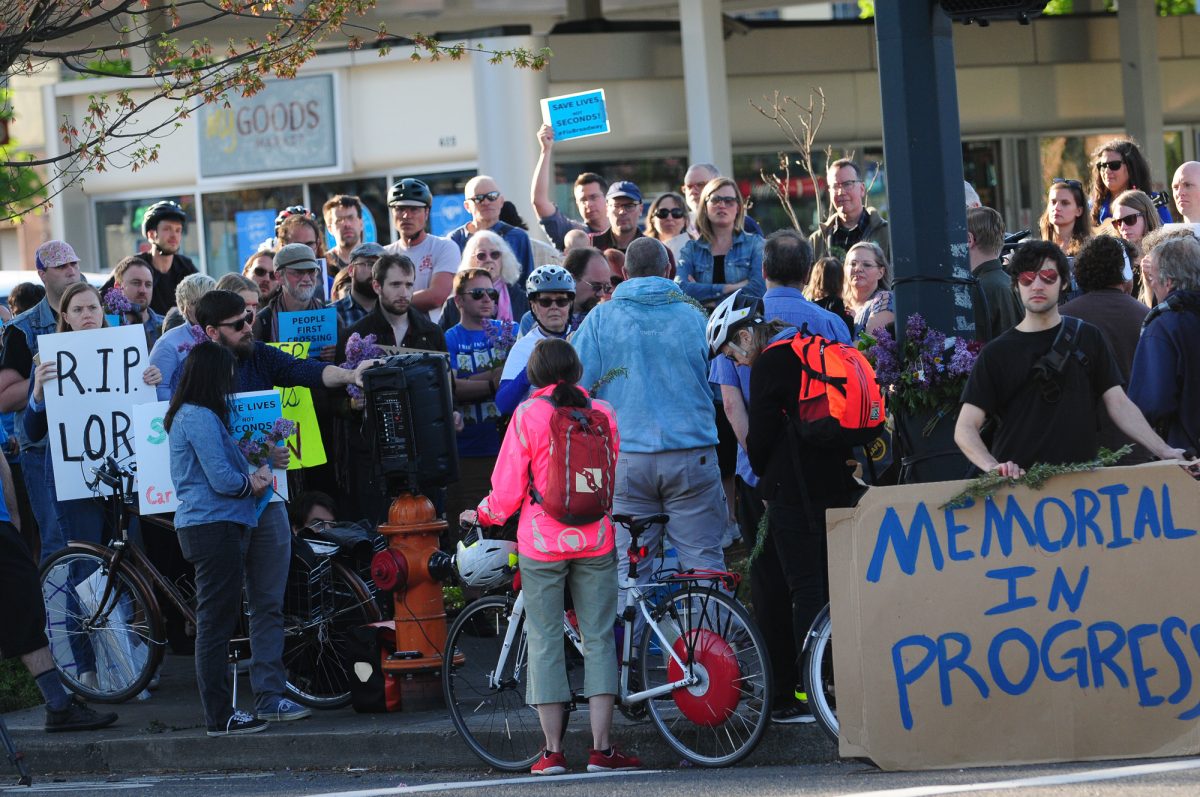
(Photos: Jonathan Maus/BikePortland)
We’ve done this too many times before. Someone is killed. We grieve. We pressure the city to do more. We show up on the street with signs and candles and flowers. Speeches are made.
But this time there was something different. The City of Portland acted before we even showed up.
On Friday, Lori Woodard was killed as she walked across Northeast Broadway on Grand. A delivery truck driver turning left failed to see her and/or failed to prevent the collision (police are still investigating). It happened in a very unforgiving place where drivers dominate and stress runs high for everyone — especially people not protected by a steel cage.
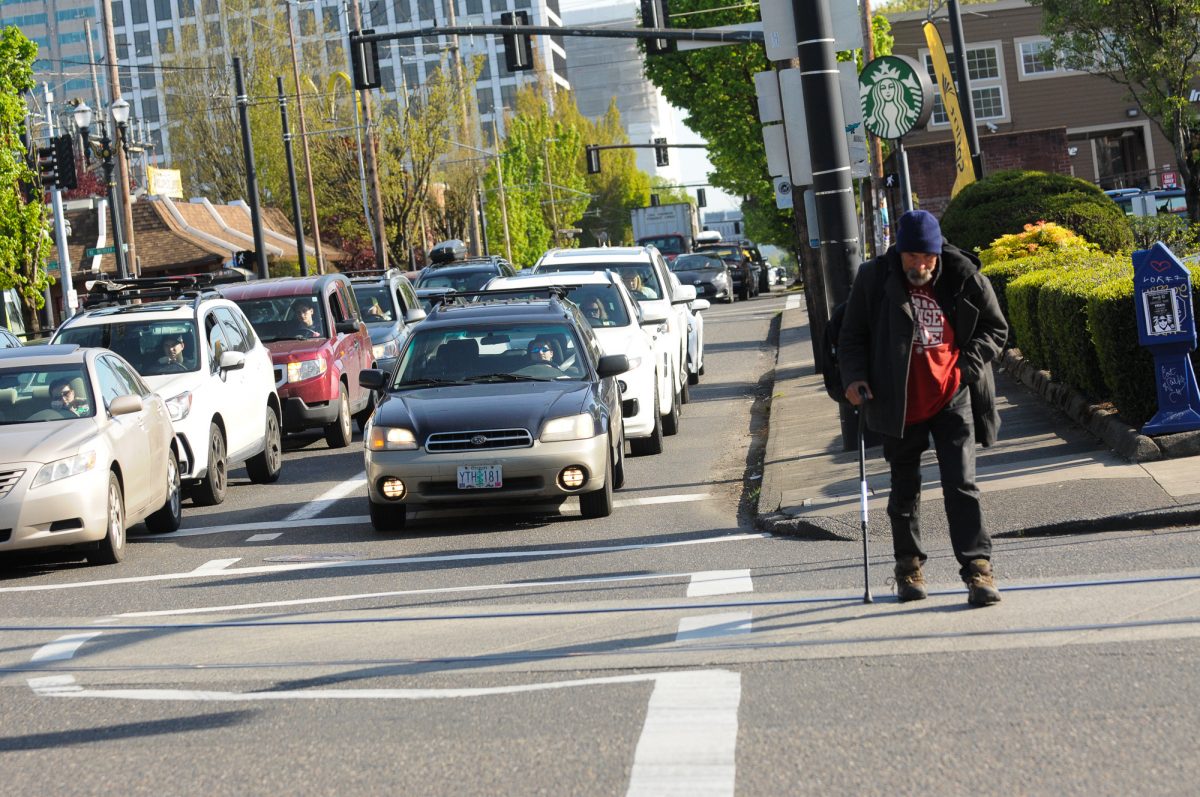

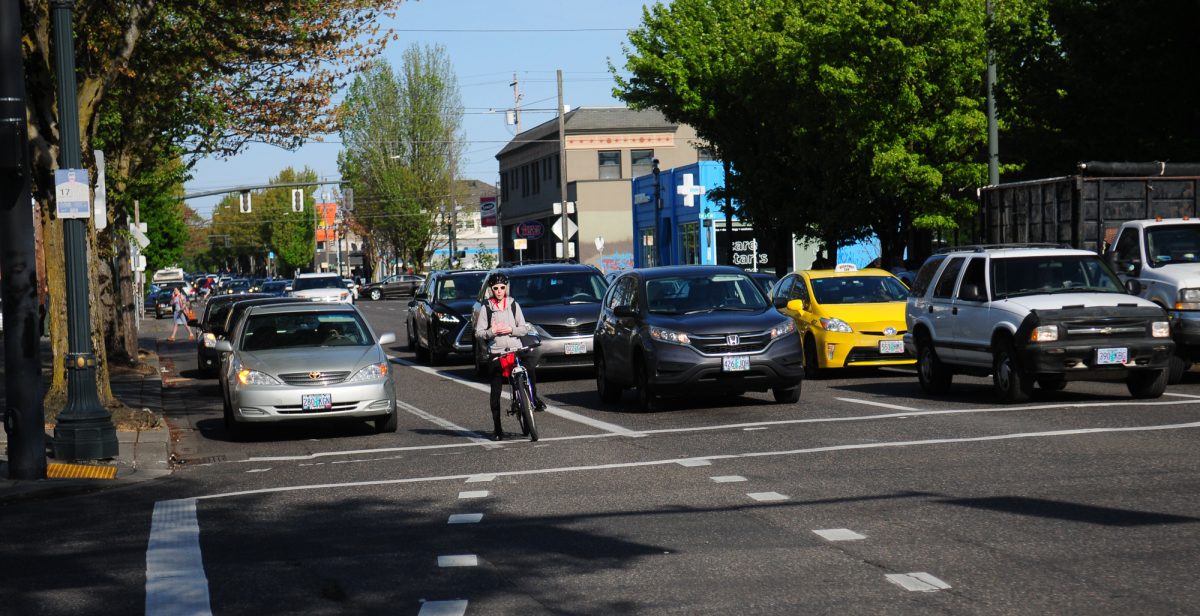
We’ve seen the City of Portland react to deaths like this with infrastructure changes in the past; but never this quickly. This morning, just five days after Woodard’s death, the Bureau of Transportation installed plastic wands and temporary traffic cones to narrow the intersection. They also plugged in a message board sign that flashed the words: “Traffic Death April 19 – Travel With Care”.
As dozens of people gathered for a rally and memorial event at the scene of this tragedy Wednesday evening, PBOT announced signs like this would be the new normal.
“This was a priority before this horrible thing happened. But it underlines how urgent this is. It feels like the climate change issue. We just have to take our work to a different level.”
— Marshall Runkel, Chief of Staff to Commissioner Eudaly
In a directive released today (PDF), interim PBOT Director Chris Warner introduced a “crash response protocol.” “After every fatal crash,” reads the directive, “PBOT will provide an immediate update with all available information to the Commissioner of Transportation. The bureau will then install prominent electronic Variable Message Signs (VMS) at the crash location to mark the tragic crash sites and raise awareness of the traveling public about specific dangers and the overall importance of driving safely in our city.”
The changes installed at the crash location were already vetted and planned through the Central City in Motion plan. PBOT Commissioner Chloe Eudaly signed off on them and Director Warner says he’s pushing PBOT to finish the project “on an expedited timeline.”
Commissioner Eudaly’s Chief of Staff Marshall Runkel lives near the area. He rolled up to the event today on his bicycle. “It’s just such a tragedy,” he shared with me. “We’ve got to respond at some point. It’s too bad it takes something so horrible to happen to get our stuff together. But I’m hoping we can make our actions match our rhetoric. Make our budget match our rhetoric. Make the way we organize our work match our rhetoric.”
“This was a priority before this horrible thing happened,” Runkel continued. “But it underlines how urgent this is. It feels like the climate change issue. We just have to take our work to a different level.”
Runkel’s words come at a time when Portlanders are reeling from a spate of traffic fatalities. Commissioner Eudaly spoke to that in a speech on the street corner at tonight’s event. “This has been a brutal, heartbreaking month on Portland streets. Nine people have died in crashes in less than two weeks.”
So far this year, Portland is averaging about one fatal traffic crash per week.
Advertisement
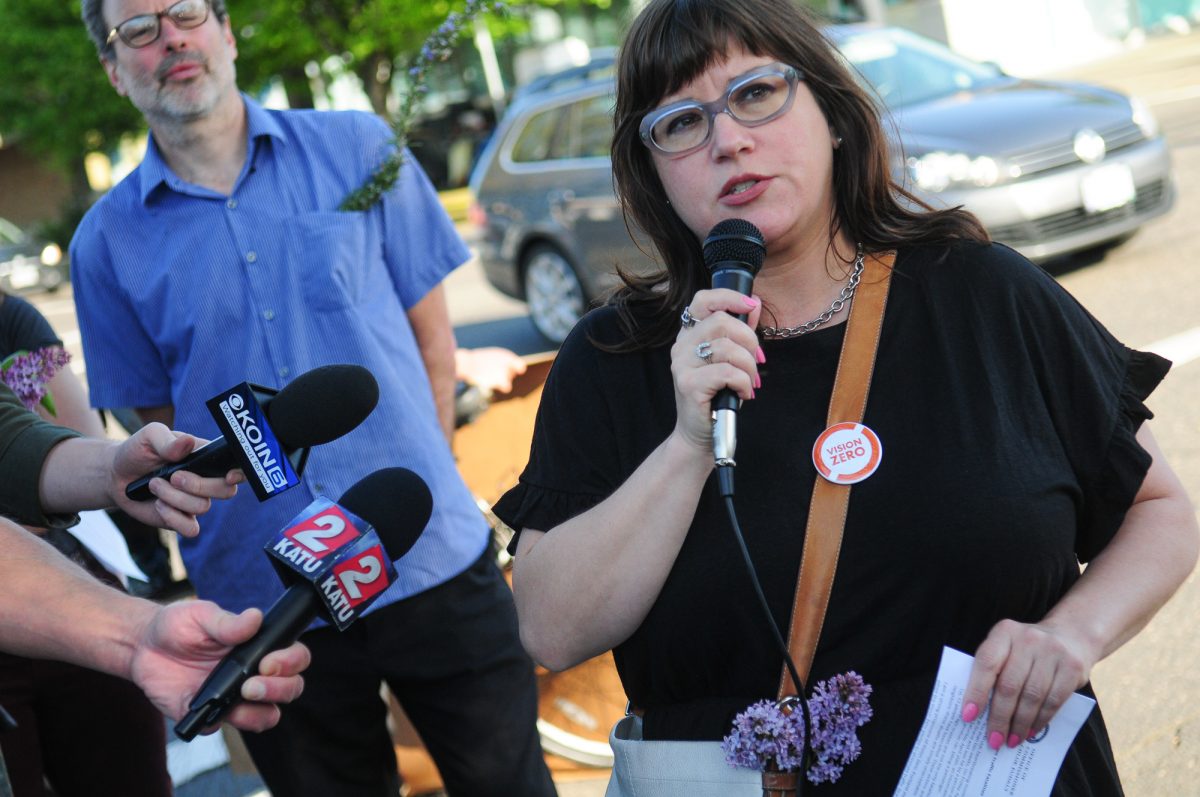
Eudaly oversees a bureau that is committed to Vision Zero, an initiative that aims to eliminate all traffic deaths by 2025. “These recent tragedies show us it’s time to do more of this work and to do it faster,” she said. (Read her full statement on her Facebook page.)
While PBOT works on systemic fixes and safety projects citywide, Interim Director Warner said they will “accelerate” the following measures citywide:
Leading Pedestrian Intervals (LPIs) will become our default practice at new or upgraded traffic signals on High Crash Network streets. A proven tool to improve pedestrian safety, LPIs give people crossing the street a head start at a crosswalk, making them more visible to drivers and reducing potential conflicts. PBOT will add at least ten LPIs each year to existing signals citywide. (*Note: An LPI has already been implemented at Broadway and Grand)
Protected left turns will become PBOT’s default practice at new or upgraded traffic signals on High Crash Network streets. We will install at least three protected left turns each year at existing signals.
Left turn traffic calming, originally slated to begin this summer, will start immediately. This treatment slows vehicle speeds through large intersections and protects pedestrians at high-conflict turns. It has shown promise in New York and we are excited to evaluate its impact here in Portland.
And when fatal crashes occur, Warner says he will instruct PBOT to do an emergency assessment of the site and, “deploy a range of possible ‘rapid response’ safety improvements that include: interim design changes; signal improvements; and public education. PBOT will apply this protocol to fatal crashes that have happened in the past 12 months.
These are positive measures; but we know it will take much more substantive changes — like reconfiguring lanes, reducing driving space, and creating physical separation between drivers and walkers/bicycle riders — to prevent more deaths.
Below are more images from the event.
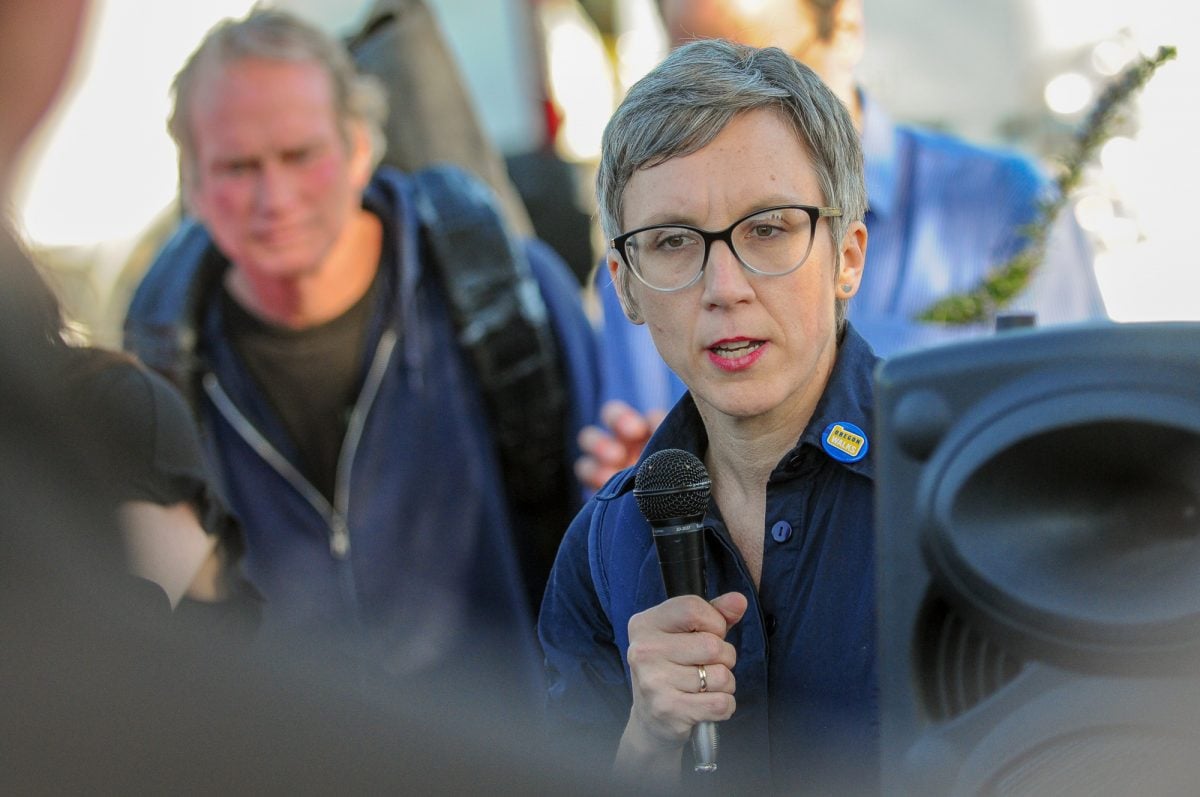

Thanks to Bike Loud PDX for pulling this event together and to The Street Trust, Oregon Walks and Community Cycling Center for showing up and offering support.
— Jonathan Maus: (503) 706-8804, @jonathan_maus on Twitter and jonathan@bikeportland.org
Never miss a story. Sign-up for the daily BP Headlines email.
BikePortland needs your support.

